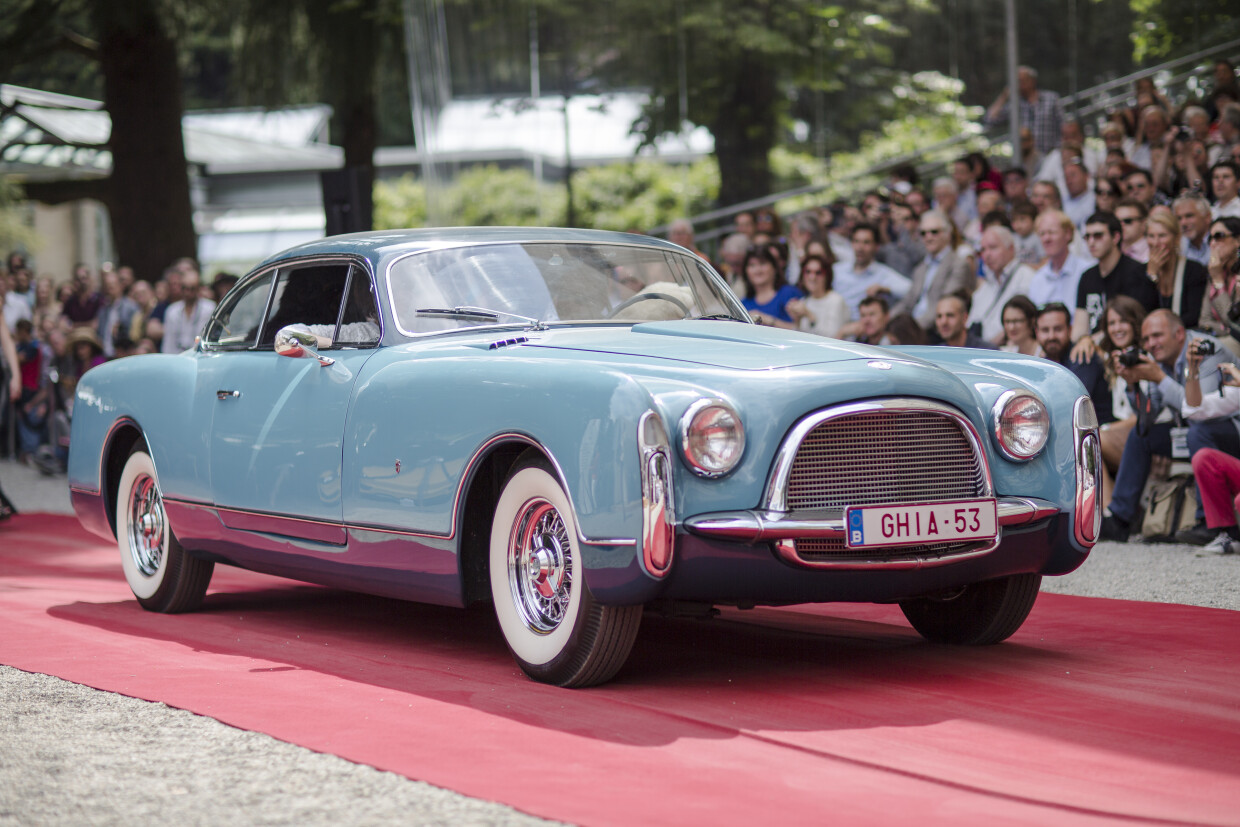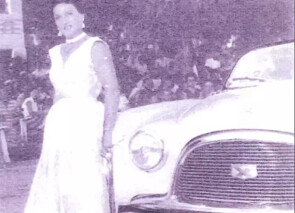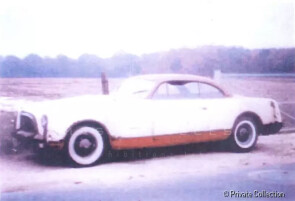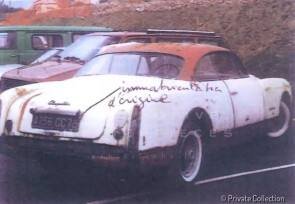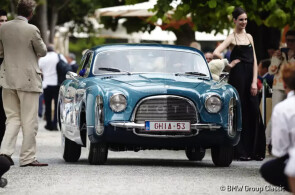
1953 Chrysler New Yorker Ghia Special
ON/OFF
Why am I an Automotive Masterpiece?
Chrysler President K.T. Keller deserves much of the credit for Chrysler’s stylistic renaissance of the early 1950s. In particular, he hired Virgil Exner to design several “Idea Cars” and contracted Ghia to build them. Exner’s resulting Italian-built dream cars were all usable and running examples that were based mostly on the New Yorker chassis and had the famous James C. Zeder’s “FirePower” Hemi V-8 engines. One of the first of these dream cars was the Chrysler Special, which was a three-passenger coupé on a shortened chassis., the only shortened version produced. It debuted at Paris in 1952 with Continental-inspired styling elements, which included a long bonnet/short deck profile, knife-edge wings, and a trapezoidal grille. The Thomas Special, built for C.B. Thomas, the president of Chrysler’s export division, retained this overall styling, as it had a notchback profile and seating for five, which was based upon the standard-length New Yorker chassis. The most noticeable difference from other Specials was the split two-piece front windscreen. The Thomas Special was highly acclaimed, and series production of the car was heavily contemplated, with sales ultimately being handled by Chrysler’s French distribution arm, Société France Motors. Over the years, these cars were known alternatively as the GS-1, the Styling Special, the Chrysler Special, and the Ghia Special. Ultimately, just six vehicles were produced for Chrysler, whilst Ghia built another twelve for themselves.
The Chrysler Special from 1952 was followed by another Special for 1953. Built on a longer 125.5in chassis, the ’53 Special featured a more conventional rear end and trunk lid allowing for more passenger space, the lack of a grille outline molding and a more pronounced air intake on the hood. The Ghia Special presented here was delivered by Société France Motors to Leon Coulibeuf, and it was later shown by his wife at the 1953 Concours d’Elegance d’Enghien-les-Bains, as featured in the September 1953 issue of L’Action Automobile. It’s not entirely clear if Coulibeuf purchased the Ghia coupe for his own use or for his wife’s enjoyment. Coulibeuf made his fortune by manufacturing the iconic concrete electric poles that were used by the millions when rebuilding post-war Europe. Coulibeuf was a passionate enthusiast and invested his fortune in owning and racing such vehicles as a Mercedes-Benz 300 SL Gullwing, a Porsche 356, and an Alfa Romeo 1900. In 1957, he competed at Le Mans alongside José Behra in a Maserati 200S, with famous Bugatti and Gordini Works mechanic Albert Aumaire providing support. Coulibeuf and Aumaire also ran the Tour de France Automobile together in 1953.
